
Lansing is the capital of the U.S. state of Michigan and the most populous city in Ingham County. It is mostly in the county, although portions of the city extend west into Eaton County and north into Clinton County. The 2020 census placed the city's population at 112,644, making it the sixth most populous city in Michigan. The population of its metropolitan statistical area (MSA) was 541,297 at the 2020 census, the third largest in the state after metropolitan Detroit and Grand Rapids. It was named the new state capital of Michigan in 1847, ten years after Michigan became a state.
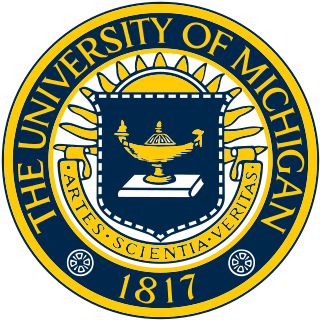
The University of Michigan Library is the academic library system of the University of Michigan. The university's 38 constituent and affiliated libraries together make it the second largest research library by number of volumes in the United States.

The Michigan State Capitol is the building that houses the legislative branch of the government of the U.S. state of Michigan. It is in the portion of the state capital of Lansing which lies in Ingham County.
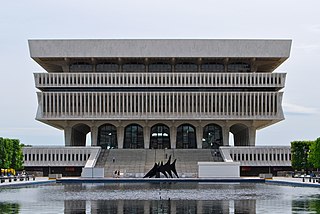
The New York State Library is a research library in Albany, New York, United States. It was established in 1818 to serve the state government of New York and is part of the New York State Education Department. The library is one of the largest in the world by number of items held, with over 20 million cataloged items in 2011.
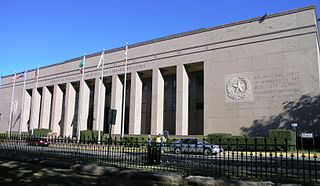
The Texas State Library and Archives Commission (TSLAC) refers to the state government agency in the state of Texas that supports the reading, learning, and historical preservation needs of Texas and its people. The agency is charged with preserving the archival record of Texas, supporting research, and making primary resources available to the public; assisting public, academic, and school libraries across the state in meeting the needs of their communities and students; helping public agencies maintain their public records; and supporting the reading needs of thousands of Texans with disabilities preventing them from reading a standard book.

The Detroit Public Library is the second largest library system in the U.S. state of Michigan by volumes held and the 12th-largest public library system in the United States. It is composed of the Main Library on Woodward Avenue, which houses the library's administration offices, and 23 branch locations across the city. The Main Library is part of Detroit's Cultural Center Historic District listed in the National Register of Historic Places adjacent to Wayne State University campus and across from the Detroit Institute of Arts.
The Eli M. Oboler Library serves the students and faculty of Idaho State University, as well as the local community of Pocatello, Idaho. It is named after Eli M. Oboler, the university's longtime head librarian.

The Connecticut State Library is the state library for the U.S. state of Connecticut and is also an executive branch agency of the state. It is located in Hartford, Connecticut directly across the street from the Connecticut State Capitol. The State Library provides a variety of library, information, archival, public records, museum, and administrative services to the citizens of Connecticut, as well as the employees and officials of all three branches of state government. Students, researchers, public libraries and town governments throughout the state are also served by the State Library. In addition, the State Library directs a program of statewide library development and administers the Library Services Technology Act state grant. "The mission of the Connecticut State Library is to preserve and make accessible Connecticut's history and heritage and to advance the development of library services statewide."

Michigan State University Libraries is the academic library system of Michigan State University in East Lansing, Michigan, United States. The library system comprises nine branch locations including the Main Library. As of 2021–22, the MSU Libraries ranked 26th among U.S. and Canadian research libraries by number of volumes and 7th among U.S. and Canadian research libraries by number of titles held.

The Cultural Center Historic District is a historic district located in Detroit, Michigan, which includes the Art Center : the Detroit Public Library, the Detroit Institute of Arts, and the Horace H. Rackham Education Memorial Building were listed on the National Register of Historic Places in 1983. The district contains several cultural attractions.

The University Libraries are the academic library system for Bowling Green State University and its regional campuses.
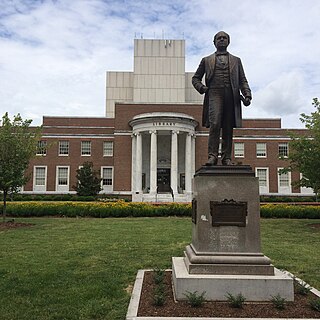
The University of North Carolina at Greensboro University Libraries system has two branches on campus, both located in Greensboro, NC. These include the Walter Clinton Jackson Library and the Harold Schiffman Music Library. Affiliated campus libraries include the Teaching Resource Center and SELF Design Studio in the School of Education, the Interior Architecture Library in the Gatewood Studio Arts Building, and the Intercultural Resource Center located in the Elliot University Center. During the fall and spring semesters, Jackson Library provides a 24/5 study space for UNCG students, faculty and staff with UNCG ID from 12 am Monday – 7:00 am Friday. Michael A. Crumpton is the current Interim Dean of the libraries.
The Great Lakes Quilt Center is the Michigan State University Museum’s center for quilt-related research, education, and exhibition activities. While the museum, established in 1857, has long held significant collections, its focus of activities on quilt scholarship and education began with the launch of the Michigan Quilt Project at the museum in 1984. The Michigan Quilt Project not only spearheaded the documentation of the state's quiltmaking history, but also stimulated interest in strengthening the museum's quilt collection, upgrading its care, and expanding its use. As of 2008, the Michigan Quilt Project has collected documentation on over 9000 quilts in the state and the collection of quilts numbers over 700 with significant examples from Michigan and the Great Lakes region, examples of quilts from numerous African countries, major ethnographic collections of Native American quilts and Michigan African American quilts, and special collections assembled by Kitty Clark Cole, Harriet Clarke, Merry and Albert Silber, Deborah Harding, and Betty Quarton Hoard. The MSU Museum also houses two important collections developed by pioneering American quilt historians Cuesta Benberry and Mary Schafer.
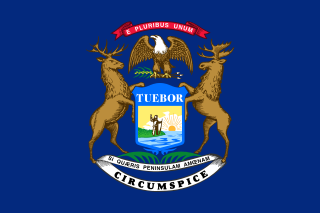
The following outline provides an overview of and topical guide to the U.S. state of Michigan:

The State Library and Archives of Florida is a government library with historically significant records of Florida such as private manuscripts and correspondence, local government records, photographs, maps, film clips, and materials that complement the official state records and Florida history.
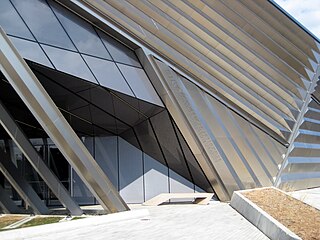
The Eli and Edythe Broad Art Museum is a nonprofit, contemporary art museum designed by Zaha Hadid located on the campus of Michigan State University in East Lansing, Michigan, United States. It opened on November 10, 2012.

The Michigan Hall of Justice, also known as the Michigan Supreme Court Building is a six-story structure at 925 Ottawa Street in Lansing, Michigan. An example of monumental neoclassicism, the Hall of Justice was designed by Spillis Candella DMJM and Albert Kahn Associates, Inc.

The State Library of Iowa is a library service in the U.S. state of Iowa. Founded in around 1840, it is based in Des Moines and is run by the Iowa Department of Education. The State Library supports local libraries in the state and it itself acts as a resource for the state government and its citizens. It is funded from local taxation.

The LuEsther T. Mertz Library is located at the New York Botanical Garden (NYBG) in the Bronx, New York City. Founded in 1899 and renamed in the 1990s for LuEsther Mertz, it is the United States' largest botanical research library, and the first library whose collection focused exclusively on botany.
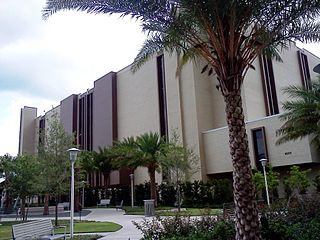
The University of South Florida Tampa Library is the main research library for the University of South Florida. Housing over 1.3 million books, academic journals and electronic resources, including 52,000 e-journal subscriptions, 443,000 e-books, and over 800 databases, the library has more than 2 million visitors each year. The library offers tutoring and writing services, laptops, a career resource center, and course reserves. The facility houses several special and digital collections, including literature, oral histories, photographs, artifacts, and the university archives. The current Dean of USF Libraries is Todd Chavez.




















